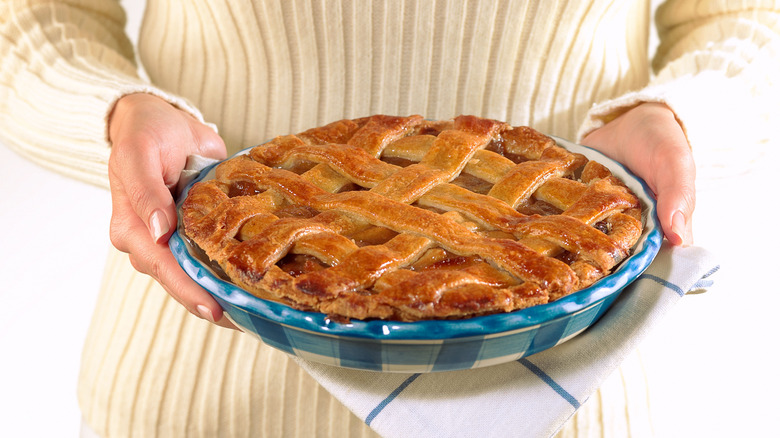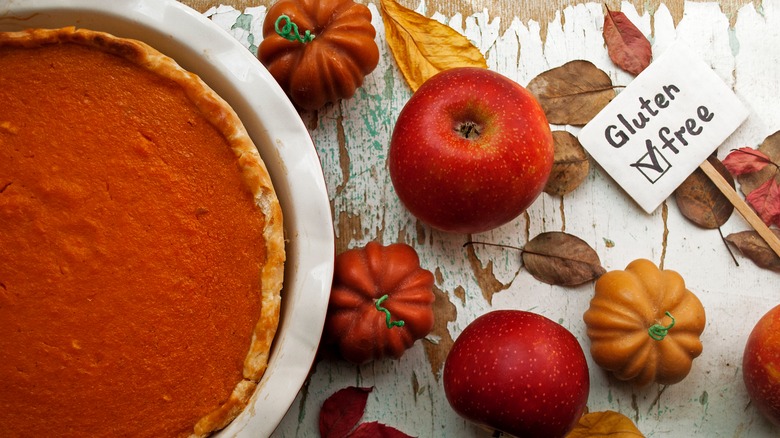How Almond Flour Pie Crust Differs From Traditional
From pumpkin and apple to pecan or shoofly — we love our pies. MasterClass explains that a pie can have a sweet or savory filling, but its pastry crust — either just on the bottom or enclosing all the goodness with a top and bottom crust — is the defining feature of a pie. And that flaky crust, usually a mixture of flour, butter, and a little water or even vodka, can present a problem for people who can't or choose not to consume gluten.
Of course, there's an array of gluten-free flours, though each has unique properties and limitations. Gluten-free flours don't always behave like wheat flour, so you may need to adapt recipes to make a gluten-free pie crust. Adding an egg, for example, adds protein to your pie crust dough and can help G-free crusts hold together better and keep your pie filling in place when serving. Almond flour is made from ground, blanched almonds, according to Blue Diamond, and it's a great choice for making pie crust, though there are some considerations to keep in mind.
Your almond flour crust requires special handling
Serious Eats points out that traditional pie crusts "get their uniquely flaky texture via layers of gluten-strengthened dough, separated by layers of fat and steam." Because almond flour doesn't contain gluten, the consistency of a pie crust using it will be quite different. While a wheat flour crust is rolled out and can be decoratively cut or shaped, the texture of the almond flour crust will be more akin to a graham cracker crust, according to The Spruce Eats, which makes it best suited for recipes that call just for a bottom crust, rather than those that require a top and bottom. You'll get the best results if you gently press the almond flour dough into the pie plate and use a fork to create a decorative flourish on the crust around the edge of the pie plate. Cassidy's Craveable Creations also cautions that almond flour tends to brown quickly, so you may want to use aluminum foil or a crust protector to keep your crust a perfect golden brown.
And for you keto fans out there, the flour is an excellent choice for your next low-carb crust. Carb Manager points out that a regular frozen pie crust has 13.3 grams of carbs, while the almond flour crust has 6 grams of carbs. A keto-friendly, gluten-free pie crust with all the deliciousness you crave from your favorite pie? Yes, please!

